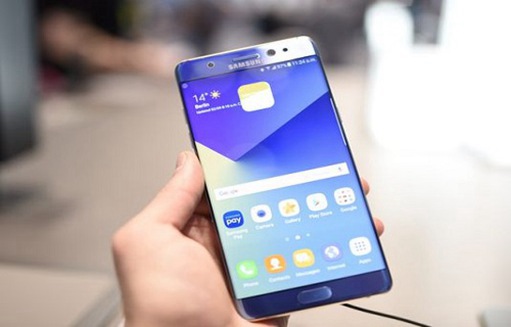导读:随着近日三星对于存在电池隐患的Galaxy Note 7召回事件引发关注,锂离子电池的安全问题也暴露当前各大公司在追求大电量和小重量电池时遇到的技术瓶颈,究竟是什么造成如今的锂离子电池事故频发?

The burning lithium-ion batteries that caused a massive recall of Samsung Galaxy Note 7 smartphones highlight the conundrum tech companies face as they look for more powerful, lightweight and easily recharged batteries to power myriad consumer devices.
近日,由于存在锂离子电池爆炸隐患,三星对于Galaxy Note 7的大规模召回暴露了当前各科技公司在寻找大容量、低重量同时兼具快充特性的电池时遇到了瓶颈。
Lithium-ion batteries burst onto the scene in the early 1990s when they first appeared in hand-held video cameras. Since then they’ve been used to power everything from jets’ electrical systems to cars to the smartphones carried by billions. They’ve also caused fires and mass recalls, from last year’s hoverboard flameout to the grounding of Boeing787s.
自二十世纪九十年代,锂离子电池首次被使用在手提式摄像机以来,这种电池如今已经被广泛应用于各个领域,从喷气式飞机的电力系统到电动汽车再到数十亿规模的智能手机。与此同时,从去年一架波音787s着陆时悬滑板起火事件起,锂离子电池的安全隐患造成了数起大规模的的召回事件。
The batteries are attractive to device makers because they can store relatively large amounts of energy in a small space, said Jason Croy, a physicist in the Electrochemical Energy Storage department at Argonne National Labs
据一位来自阿尔贡国家实验室电化学能量存储部门的物理学家Jason Croy称,对于设备制造公司来说,锂离子电池存在巨大的吸引力,它可以在较小体积的情况下存储相对大的电量。
Lithium-ion batteries are no more inherently dangerous than any other battery, but they are more energy dense. And the more energy stored, the potentially more dangerous a battery becomes, said Croy.
Jason Croy称,锂离子电池自身不存在设计上的隐患。但是,由于其具有较大的能量密度,存储的电量越多,其潜在的危险就越大。
At the same time, consumers are continually demanding more power for their devices.
与此同时,消费者对于电池的要求却越来越高,各种各样的设备都需要锂离子电池。
The batteries work by moving lithium particles between a negative and positive electrode to charge and discharge. To allow those particles to move easily, they’re suspended in pressurized cells inside the batteries filled with volatile and flammable chemicals.
锂离子电池的充放电是通过使锂离子在阳极与阴极之间移动完成的,为了使锂离子移动得更加容易,电池被密封起来并充满挥发性和易燃化学液体从而使锂离子悬浮起来,以增加锂离子的移动速度。
The movement of the particles causes heat as the battery is charged and discharged. If the battery was badly designed or improperly used or installed, that heat can ignite the chemicals, causing flames or explosions.
当电池处于充放电状态时,锂离子的移动产生热量。如果电池遇到设计缺陷、安装错误等情况都会引燃密封在里面的化学液体,造成着火甚至爆炸。
Damage to the thin walls that keep the different parts of the battery separate can also lead to short circuits and a corresponding heat buildup.
不同电池工作组之间的薄壁损坏也会造成短路从而产生热量积累。
While overall very safe, the literally billions of lithium-ion batteries in use worldwide mean there have been several newsworthy failures over time.
虽然总体上相对安全,但是就全球范围存在数十亿块锂离子电池,随着时间的推移总会出现几起引发社会关注的电池问题事件。
In 2013 fires in two 787 Dreamliner jets caused by a short circuit in lithium ion batteries led Boeing to redesign the plane so that each battery was housed inside an insulated, vented and fireproof steel box.
在2013年,两架波音787梦想客机电力系统由于锂离子电池短路失效事件,使得波音公司不得不对飞机进行重新设计,最终将电池安装在相互隔离的具有排风系统和防火功能的金属箱内。
Lithium-ion batteries were also implicated in at least two fires in Tesla electric cars after they ran over road debris that damaged the battery pack under the vehicle. The car company added three underbody shields to the Model S to further protect the electric cars’ batteries from impacts.
另外,锂离子电池也与至少两起特斯拉电动汽车事故有关,由于路面杂物破坏了位于汽车底盘的电池组而引发事故。为此,特斯拉公司在Model S的底盘上又添加了三块防护板以降低对电池的影响。







